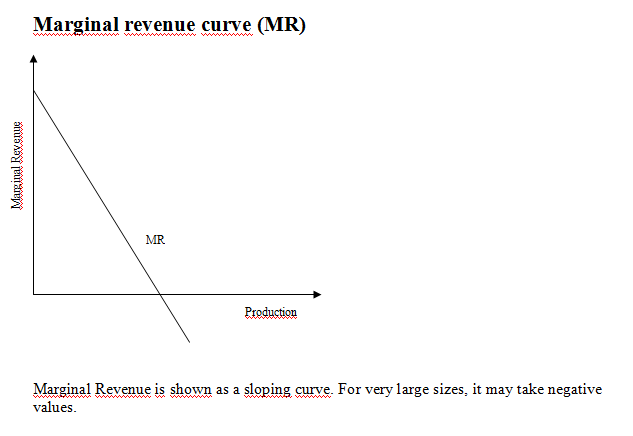Marginal revenue
| Marginal revenue |
|---|
| See also |
Marginal revenue - is the total increase caused by the increase in production by one unit.
= marginal revenue (MR)
= change in total revenue (TR)
= increase in production by one unit
Marginal Revenue is the change in the total revenue depending upon the evolution of the demand curve for a company's product.
An analysis of the marginal revenue combined with the marginal costs associated with the formation of an additional production unit allows you to explore how the increase in production by one unit will affect the profit level. Categories of marginal revenue and marginal cost are used to calculate the production volume that would allow a company to maximize its profits. When the marginal revenue exceeds the marginal costs, production should be increased, but when marginal revenue decreases below marginal cost, production should cease to grow because each additional product unit will reduce the profit level. Profits accrue their maximum gains in production in instances where the marginal cost equals the marginal revenue.
Marginal revenue curve (MR)
Balance point of the company
- line of marginal revenue
- marginal cost curve
- the intersection of MR = MC company' optimum
- ensuring optimum production volume the highest profit
For all points on the left of the , the marginal revenue is higher than the marginal cost which means that we can increase production until . This is the optimal value. If any profits occur, you should maintain the production volume. In any other case, you should consider suspending or eliminating production. When the level of production is on the right of point Q1, the marginal costs are higher than marginal revenue; I suggest a reduction in production.
References
- Somppi, K. (1985). Salary vs. marginal revenue product under monopsony and competition: The case of professional basketball. Atlantic Economic Journal, 13(3), 50-59.
Author: Maksymiliana Piekarz









